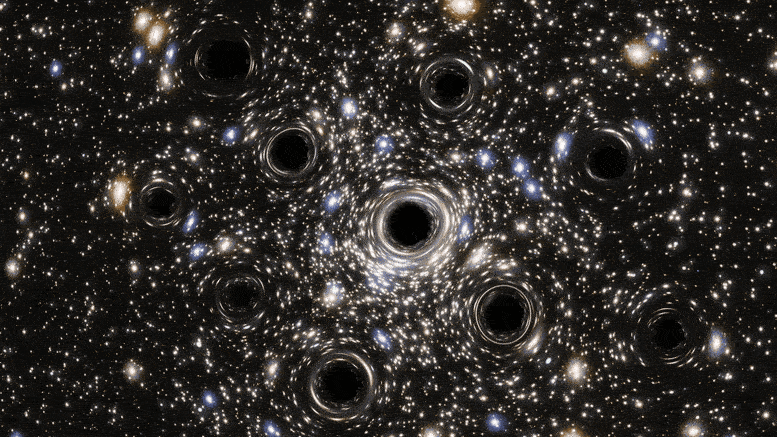
Scientists discovered a concentration of small black holes in the center of the globular cluster NGC 6397.
Scientists were expecting to find an intermediate-mass black hole at the heart of the globular cluster NGC 6397, but instead they found evidence of a concentration of smaller black holes lurking there. New data from the NASA/ESA Hubble Space Telescope have led to the first measurement of the extent of a collection of black holes in a core-collapsed globular cluster.
Globular clusters are extremely dense stellar systems, in which stars are packed closely together. They are also typically very old — the globular cluster that is the focus of this study, NGC 6397, is almost as old as the Universe itself. It resides 7800 light-years away, making it one of the closest globular clusters to Earth. Because of its very dense nucleus, it is known as a core-collapsed cluster.
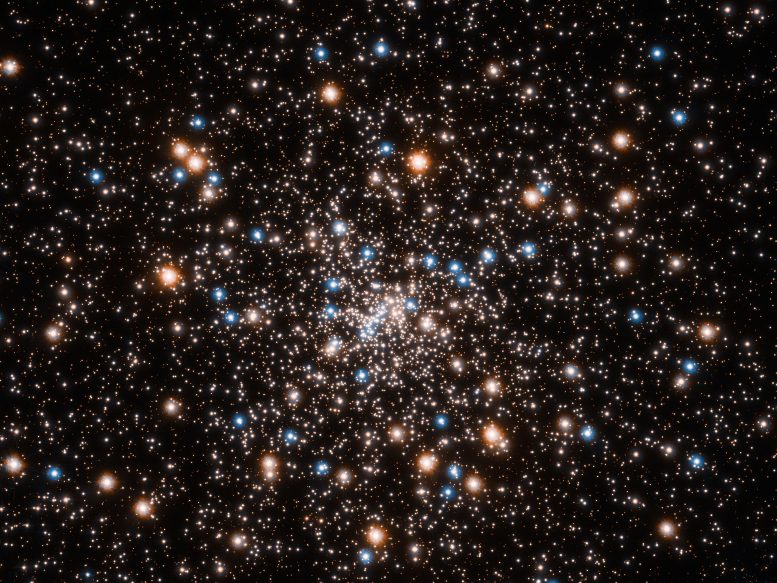
This ancient stellar jewelry box, a globular cluster called NGC 6397, glitters with the light from hundreds of thousands of stars. Astronomers used the NASA/ESA Hubble Space Telescope to gauge the cluster’s distance at 7800 light-years away. NGC 6397 is one of the closest globular clusters to Earth. The cluster’s blue stars are near the end of their lives. These stars have used up their hydrogen fuel that makes them shine. Now they are converting helium to energy in their cores, which fuses at a higher temperature and appears blue. The reddish glow is from red giant stars that have consumed their hydrogen fuel and have expanded in size. The myriad of small white objects include stars like our Sun. This image is composed of a series of observations taken from July 2004 to June 2005 with Hubble’s Advanced Camera for Surveys. The research team used Hubble’s Wide Field Camera 3 to measure the distance to the cluster. Credit: NASA, ESA, and T. Brown and S. Casertano (STScI), Acknowledgement: NASA, ESA, and J. Anderson (STScI)
When Eduardo Vitral and Gary A. Mamon of the Institut d’Astrophysique de Paris set out to study the core of NGC 6397, they expected to find evidence for an “intermediate-mass” black hole (IMBH). These are smaller than the supermassive black holes that lie at the cores of large galaxies, but larger than stellar-mass black holes formed by the collapse of massive stars. IMBH are the long-sought “missing link” in black hole evolution and their mere existence is hotly debated, although a few candidates have been found (see [1], for example).
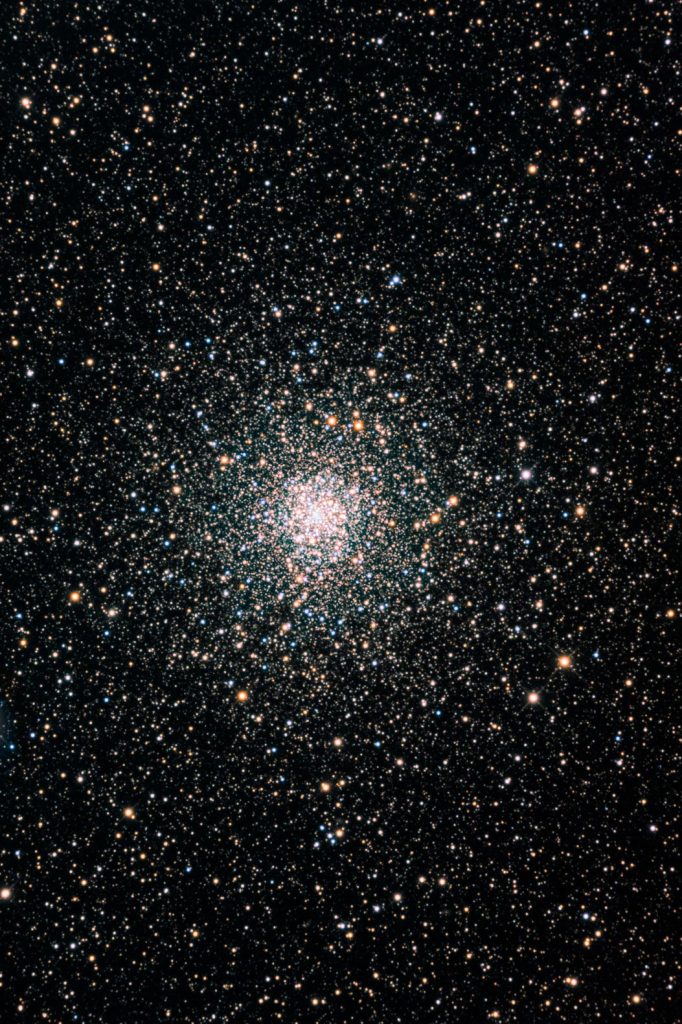
Ground-based Image of Globular Cluster NGC 6397. Credit: D. Verschatse (Antilhue Observatory, Chile)
To look for the IMBH, Vitral and Mamon analyzed the positions and velocities of the cluster’s stars. They did this using previous estimates of the stars’ proper motions[2] from Hubble images of the cluster spanning several years[3], in addition to proper motions provided by ESA’s Gaia space observatory, which precisely measures the positions, distances and motions of stars. Knowing the distance to the cluster allowed the astronomers to translate the proper motions of these stars into velocities.
“Our analysis indicated that the orbits of the stars are close to random throughout the globular cluster, rather than systematically circular or very elongated,” explained Mamon.
“We found very strong evidence for invisible mass in the dense central regions of the cluster, but we were surprised to find that this extra mass is not point-like but extended to a few percent of the size of the cluster,” added Vitral.
This invisible component could only be made up of the remnants (white dwarfs, neutron stars, and black holes) of massive stars whose inner regions collapsed under their own gravity once their nuclear fuel was exhausted. The stars progressively sank to the cluster’s center after gravitational interactions with nearby less massive stars, leading to the small extent of the invisible mass concentration. Using the theory of stellar evolution, the scientists concluded that the bulk of the unseen concentration is made of stellar-mass black holes, rather than white dwarfs or neutron stars that are too faint to observe.
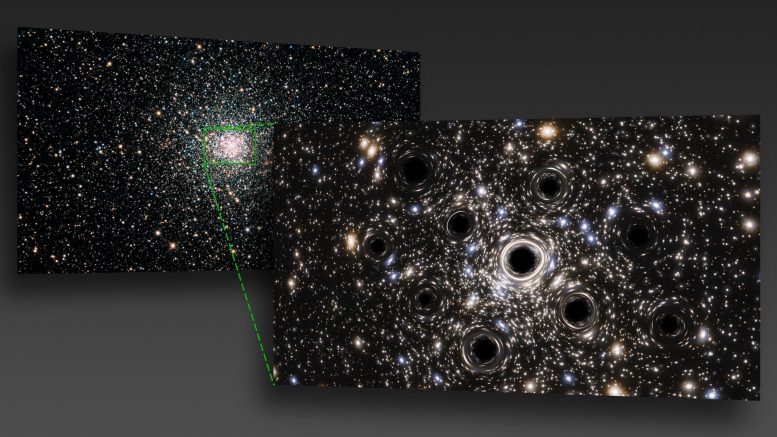
Scientists were expecting to find an intermediate-mass black hole at the heart of the globular cluster NGC 6397, but instead, they found evidence of a concentration of smaller black holes lurking there. New data from the NASA/ESA Hubble Space Telescope have led to the first measurement of the extent of a collection of black holes in a core-collapsed globular cluster. Credit: ESA/Hubble, N. Bartmann
Two recent studies had also proposed that stellar remnants and in particular, stellar-mass black holes, could populate the inner regions of globular clusters.
“Our study is the first finding to provide both the mass and the extent of what appears to be a collection of mostly black holes in a core-collapsed globular cluster,” said Vitral.
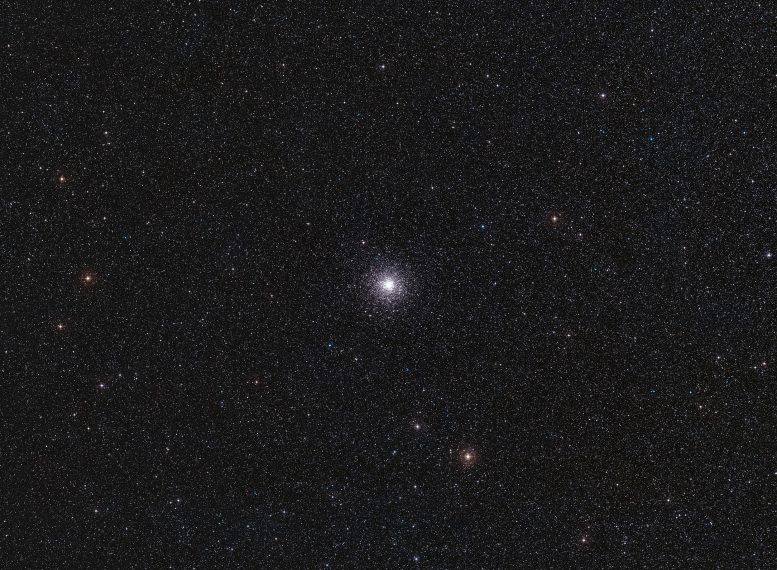
Pictured here is the region around the globular cluster NGC 6397. Credit: ESA/Hubble, Digitized Sky Survey 2. Acknowledgment: Davide De Martin
“Our analysis would not have been possible without having both the Hubble data to constrain the inner regions of the cluster and the Gaia data to constrain the orbital shapes of the outer stars, which in turn indirectly constrain the velocities of foreground and background stars in the inner regions,” added Mamon, attesting to an exemplary international collaboration.
The astronomers also note that this discovery raises the question of whether mergers of these tightly packed black holes in core-collapsed globular clusters may be an important source of gravitational waves recently detected by the Laser Interferometer Gravitational-Wave Observatory (LIGO) experiment.
Reference: “Does NGC 6397 contain an intermediate-mass black hole or a more diffuse inner subcluster?” by Eduardo Vitral and Gary A. Mamon, 11 February 2021, Astronomy and Astrophysics.
DOI: 10.1051/0004-6361/202039650
Notes
- In 2020, new data from the NASA/ESA Hubble Space Telescope provided the strongest evidence to date for a mid-sized black hole. Read about this result here.
- Proper motion describes how fast objects move in the sky.
- The Hubble data for this study were provided by A. Bellini, who measured the proper motions for over 1.3 million stars in 22 globular clusters, including NGC 6397.





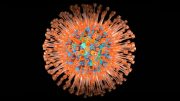



No doubt we’ll have a series of Black Hole photos in the near future then? After all, these numerous entities are only 7800 light years away (as opposed to 54 Billion) and are surrounded by lots of bright stars that can be observed to contrast against them. I mean, that’s only 7 Million times closer to us! Surely, with our suite of editing software we can assemble another vague blurry blob to ooh and aah at?
But no, there will undoubtedly be some cock-and-bull excuse as to why this would be impossible, all the while telling us their Black Hole photo of 2020 is valid…
… alas.
Umm what’s that ball of light shooting Around the black holes?
A black hole is not a hole. It’s physical mass with that much gravity that even light has difficulties to radiate out of it. It’s not an empty hole…
We should really start thinking up a better name for “Black Holes”. Unfortunately the term is now in pop culture and used everywhere. It’s just not an accurate label.
Space sinkholes or soul catcher.
Is it pointed at us.
Did this article just say that blue stars are at the end of their life? Bud, those are new stars.
I’m pretty sure they just found the Maw Installation’s location.
Beat me to it ;). The more we learn, the more we discover how accurate Star Wars is
Blue stars are not at the end of their lives, the colour is down to the surface temperature, blue or white are some of the hottest stars, orange and red are cooler.
Let’s just stick to our own solar system we have enough worries and issues with our planet.
Is that animated image an “artistic” rendering? The text is unclear. Noted in the animation: the “black hole” at the 4 o’clock position [relative to the center, “larger” black hole] turns counter-clockwise while the larger, center SINGULARITY (more to the point) is rotating clockwise; yet, the tidal string “flowing” between the two is drawn from the larger to the smaller singularity. Meanwhile, further on in the text, another image of a globular cluster [with a nifty orange box drawn around its center and that diagonal line leading to the cluster image] seems to imply that the cluster image is an extractive “close up.” [WHEW!] NICE ZOOM but are WE being zoomed? I had to ask. Also, I have no objection to this kind of research/search. It is, by its nature “illuminating”, even if the images are “fudged”, just a little bit. Indeed, I am not a Luddite but a scientist. However, I draw the line at SpaceX and its “Estes Class” rocketry. If they are not “failing” miserably to “deliver” (comestibles as well); these weekly, bi-weekly, whatever, launches must be wreaking havoc on the ecosystem, precisely: The Ozone Layer, buggaboo of the 1990s. IDK Maybe someone has solved that problem. Disclosure would be nice. Although SpaceX’s “Flexible Flyer” Class rocket “sled” failed on reentry, it is, I “believe” (a word currently gaining ground in Science World religious circles. Blame the Covid.) the best direction to take; Rail Guns notwithstanding. “Too many QUOTATION MARKS!” you may observe. A poor substitution (I am aware) for sarcasm, “I am afraid”… GOTTCHA! That’s a valid quotation; from HAL, 2001 A Space Odessy. We’ve come a long way since the movie was released in 1969. As I write this, I am sipping a piña colada on the concourse of a space station spinning silently in orbit above the Earth…
Nice one… The drink above the earth… Sounds priceless..
Maybe it is a Artificial Solar System
as part of a project to have an enclosed environment for our future.
It is an “artist’s impression”! Of course it has been computer enhanced/someone’s “imagination”, scientific discovery ‘fraud’, etc.
The author is REMISS in not providing proper captions to the images. We are left wondering until the last one if they are real photos or “artistic impressions.”
Is this the oooh and aaah of a “gear-head” that bent over, and dropped his widgett into an oil bucket, all of his rainbow sprinkles following suit!!!?
Looks like ring gates per The Expanse.
That looks like the end in minecraft